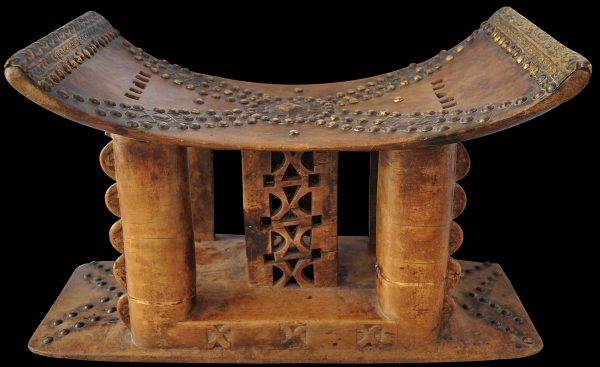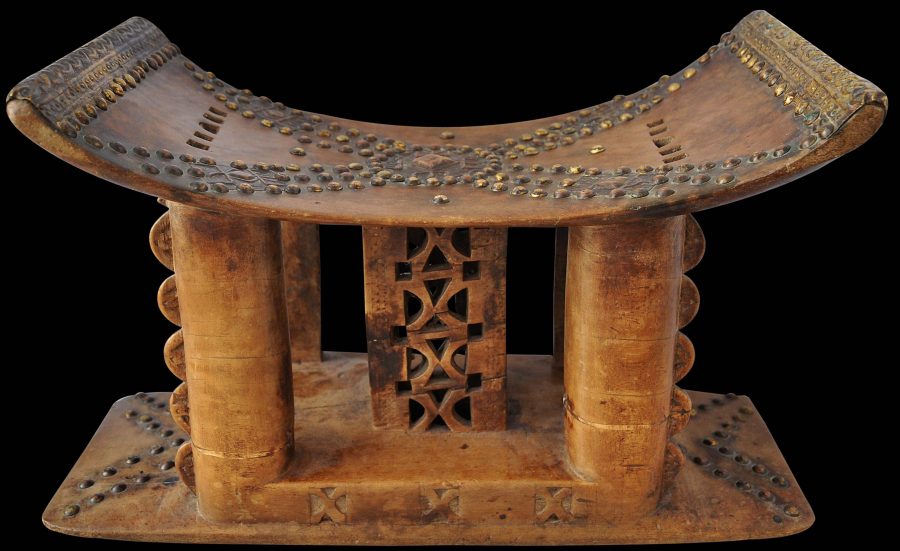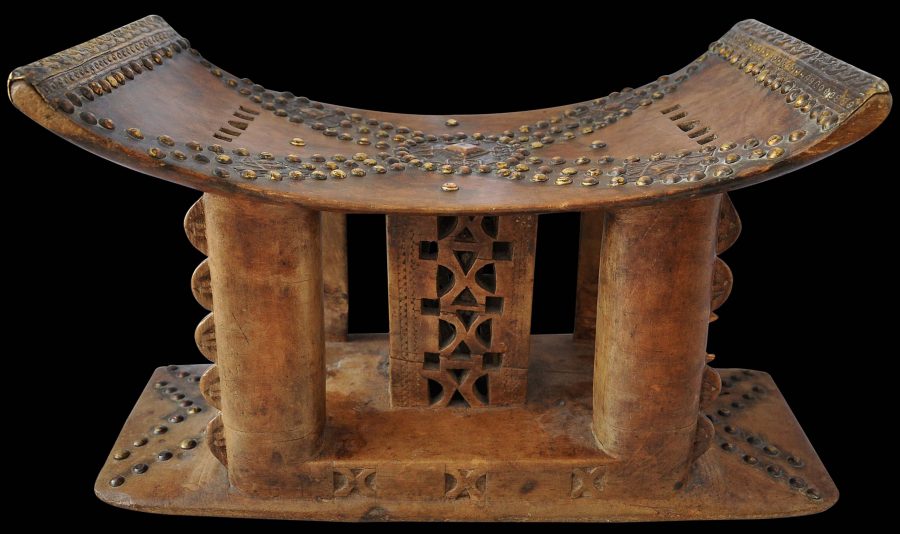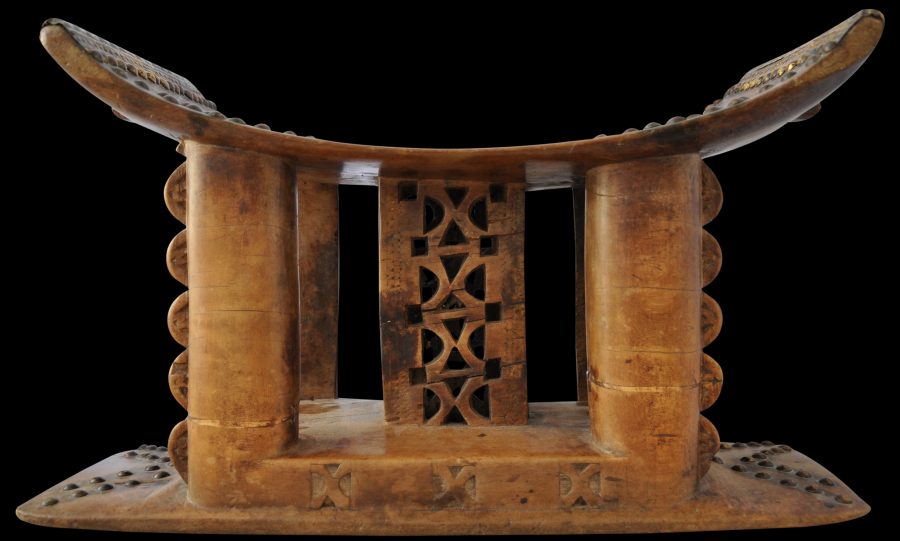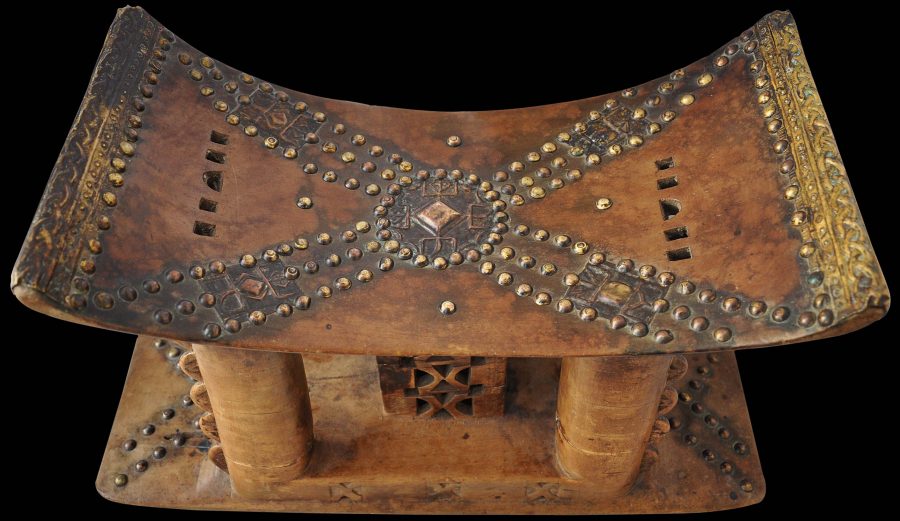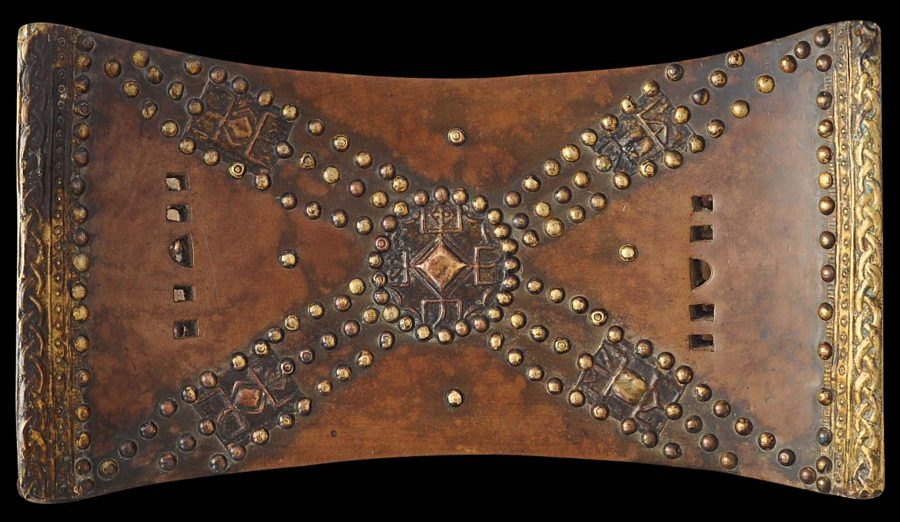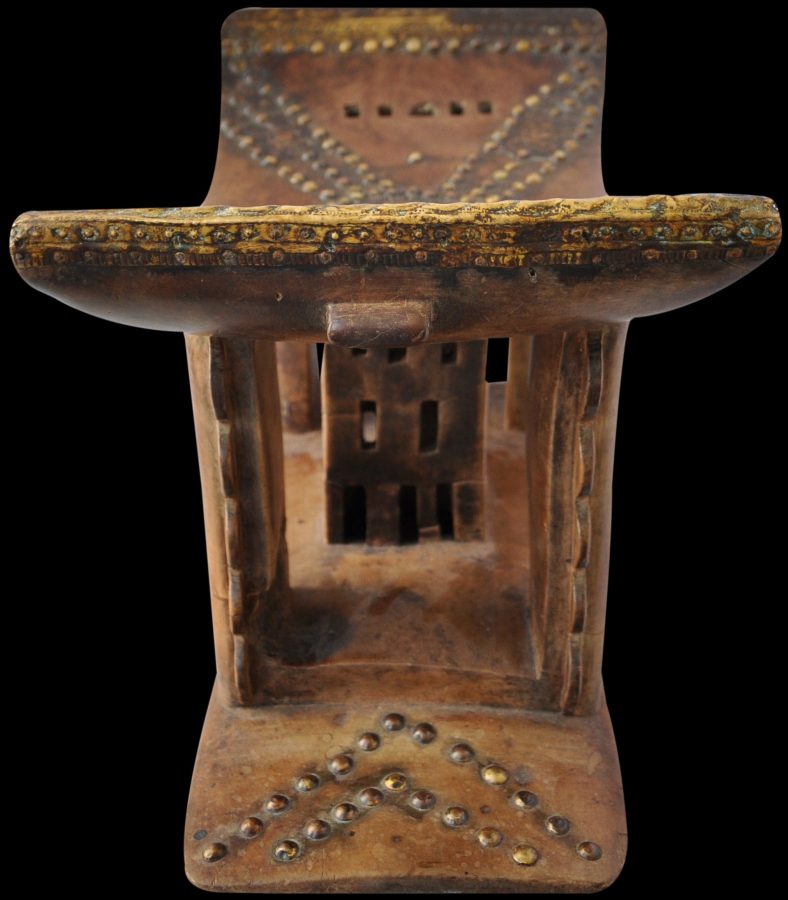This elegant stool of carved wood ornamented with copper and gilded metal applied decoration is from the Ashanti or Asante people of Ghana. It comprises a curved seat, a rectangular base, four columns with carved scalloped edging and a central post with carved open-work. The seat and the base are decorated with embossed gilded copper strips and studs.
Stools are very much personal items among the Ashanti. They are tied to the owner’s soul. Stools, when not in use, were leaned against a wall to prevent spiritual forces from seating themselves on the stool. Stools belonging to a notable often were blackened and locked away after the death of the owner. Some such stools were treated as shrines at which the deceased’s soul might be invoked.
A stool of the style and quality as the example here almost certainly would have been associated with an aristocratic house. Its excellent patina and softened contours suggest that it was frequently used and frequently washed. In addition to its lustrous, glowing patina and buttery feel, it has a fine, decorative sculptural quality. The condition is almost perfect: it is deficient just one ‘scallop’ on one of the four main supports.
A related example currently is on display in the British Museum (inventory no.: 1953 AF5.1). It is of similar form and with applied silver mounts. The applied metalwork, though similar, is more elaborate. The Museum attributes its stool to ‘the royal house’ on account of its form and decoration. Indeed, many such stools were modeled on the stool-throne of the king. Chiefs were given or commissioned such stools as evidence of their loyalty to the king.
Another, related stool in the Teel Collection is illustrated in Preston-Blier (2004, p. 26). Another is illustrated in Bargna (2000, p. 43) and another in Ginzberg (2000, p. 19).
The British Museum example is attributed to the nineteenth century. Correspondingly, a late nineteenth century dating for the example here seems fair.
References
Bargna, I., African Art, Jaca Book, 2000.
Ginzberg, M., African Forms, Skira Editions, 2000.
Preston-Blier, S. (ed.), African Masterpieces from the Teel Collection, MFA Publications, 2004.


